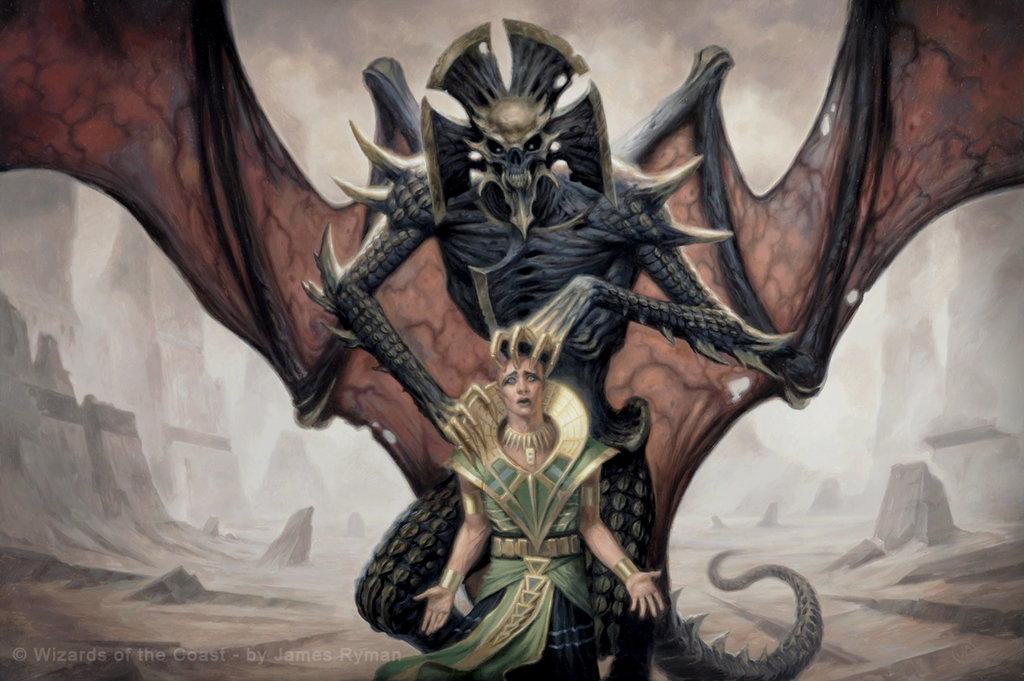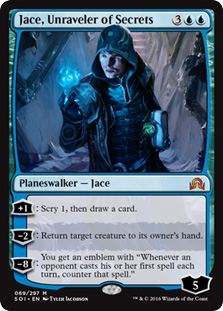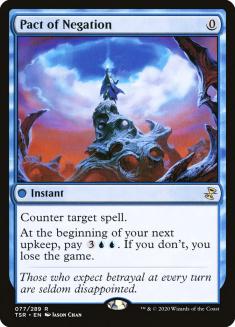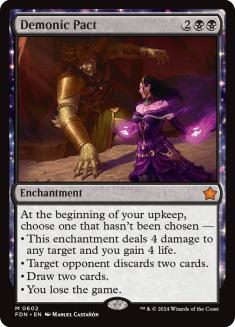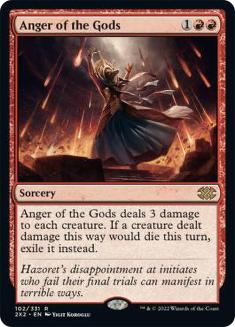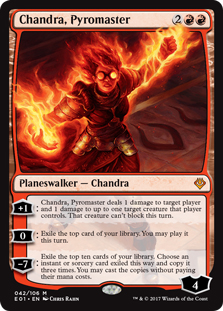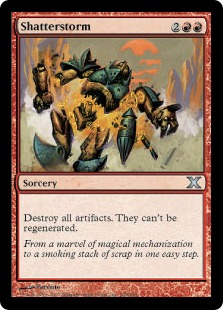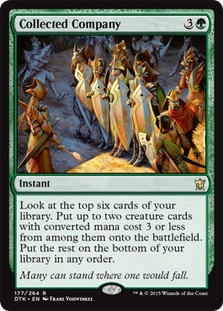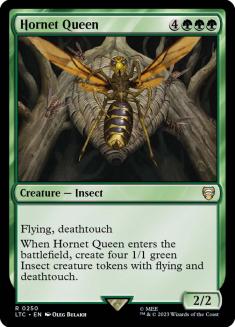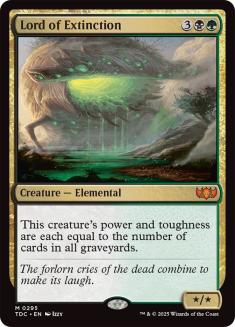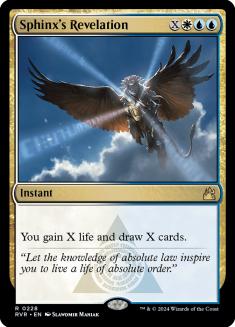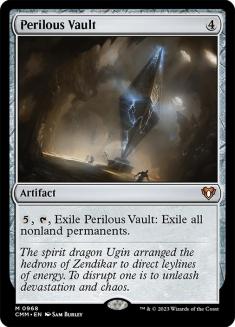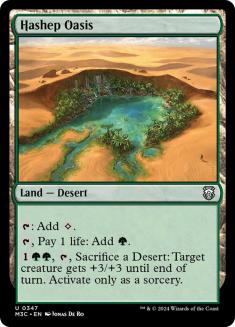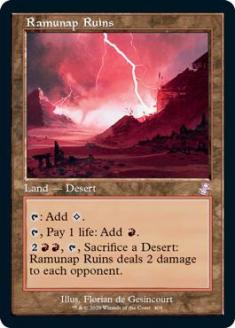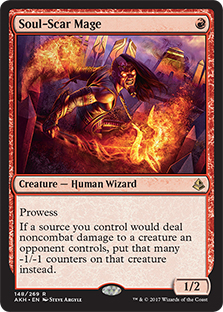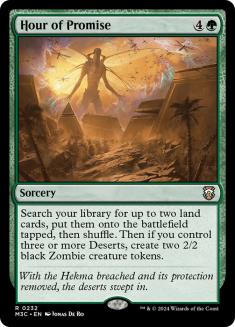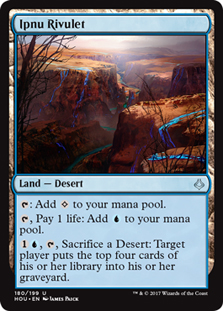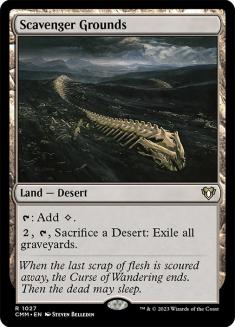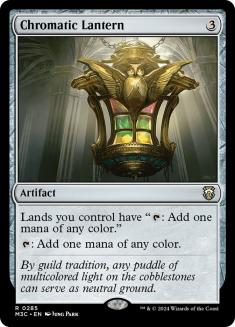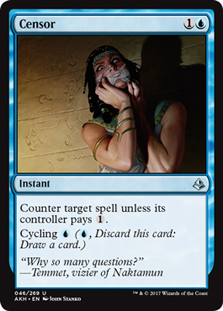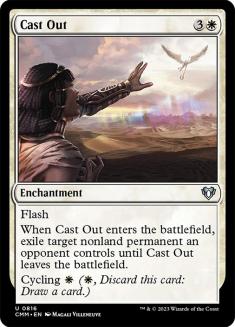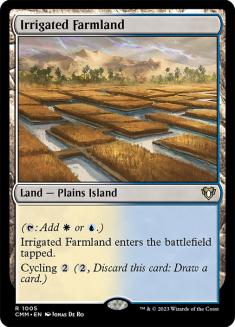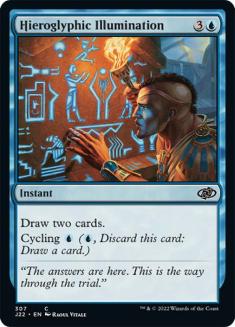Okay, so stop me if you’ve heard this one before, but…
Jumpstart Amonkhet Remastered will completely change Historic on Magic Arena (Arena). With roughly 300 (!!) cards being injected into the format, its landscape will be completely upended.
With all of the new cards on the horizon, and the seeming lack of buzz around this shift, I wanted to share some of the archetypes I’ll be sinking some time into and where I’ll be starting with them.
With Amonkhet Remastered a bit more dense on playables than Jumpstart, I don’t want to burn too much of my word count on intros and the like, so let’s address a few elephants in the room before getting into decklists:
Amonkhet Remastered isn’t just adding cards from Amonkhet and Hour of Devastation to Historic. There’s a set of roughly a dozen cards being sprinkled in the format for reasons thus unconfirmed. At this point the leading speculation is it’s to ease Pioneer’s transition to Arena. For now, all that matters is that all of these cards are now legal in Historic:
That’s a lot to take in at once, but felt worth mentioning for anyone who might’ve missed the full list of cards being added to the client. With that out of the way, decks!
Creatures (30)
- 4 Llanowar Elves
- 4 Scavenging Ooze
- 2 Rhonas the Indomitable
- 4 Steel Leaf Champion
- 4 Pelt Collector
- 4 Barkhide Troll
- 4 Lovestruck Beast
- 3 Questing Beast
- 1 Yorvo, Lord of Garenbrig
Lands (24)
Spells (6)

Of the new ports to Arena, Collected Company is one of the most talked about, and it’s easy to see why. It slots into any deck that can splash for a single green mana symbol and is interested in cramming a bunch of impactful three-drops into their curve.
Llanowar Elves decks are the first place to look for this kind of thing, as they were already in the market for the most back-breaking three-drops in the format. Collected Company provides a source of sorely needed maneuverability in the face of the various sweepers in the format. Having a low-commitment way to advance one’s battlefield is a great tool for shells like this one, or just good old-fashioned Gruul.
Creatures (30)
- 4 Llanowar Elves
- 2 Scavenging Ooze
- 3 Hazoret the Fervent
- 2 Rhonas the Indomitable
- 4 Pelt Collector
- 3 Gruul Spellbreaker
- 4 Zhur-Taa Goblin
- 4 Robber of the Rich
- 4 Bonecrusher Giant
Lands (24)
Spells (6)

A lot of the tweaks to these decks are subtle, but they radically change how decks can be built. Look a little closer at the manabase for the deck.
The Deserts from Hour of Devastation are colossal for these decks. They make it easier to ensure that early land drops are rolled up, by virtue of playing a higher land count, while never feeling like there’s nothing to do when extra lands are drawn. Hashep Oasis in particular is a fantastic tool for making sure that Rhonas the Indomitable is always able to get rowdy.
Having a land that enables Rhonas also does a great job of making Gruul function in lower-resource games. Previously one of the weaknesses of Gruul was that it wanted to have blistering starts fueled by Pelt Collector and Llanowar Elves, and had to mulligan a bit in order to find them. Now, it has the luxury of mulliganing to its best draws, because Oasis and Hazoret the Fervent make it easier to justify starting with five or six cards in hand.
This is all to say that Collected Company isn’t the only card giving aggro decks facelifts:
Creatures (21)
- 1 Grim Lavamancer
- 2 Hazoret the Fervent
- 4 Soul-Scar Mage
- 3 Earthshaker Khenra
- 4 Ghitu Lavarunner
- 4 Goblin Chainwhirler
- 1 Viashino Pyromancer
- 2 Bonecrusher Giant
Lands (20)
Spells (19)

This particular list is going in a couple of different directions, but it gives the opportunity to test a few new cards from Amonkhet Remastered:
One of Mono-Red’s biggest shortcomings is that the Wizards to enable Wizard’s Lightning were so mopey. Soul-Scar Mage does a lot to fix that. Previously, the deck was obligated to load up on Grim Lavamancers — a rough proposition in a format without fetchlands or an abundance of cheap ways to naturally fill the graveyard. Soul-Scar Mage is also excellent with Goblin Chainwhirler for all the reasons that it was in Standard. Shrinking the opponent’s battlefield is as strong as it’s ever been, after all.
I’m almost curious if there’s a version of the deck that’s lower on Goblin Chainwhirler and allows for the free damage that comes from playing copies of Sunscorched Desert. The trickiest part of the card in aggro decks is that the deck needs to have spells with enough colorless symbols to warrant its inclusion. That way, Sunscorched Desert actually “counts” as a land and not a Hornet Sting that eats land drops.
Without Bomat Courier, Scrapheap Scrounger, or other fantastic colorless aggro options in the format, that likely means something closer to Todd Anderson’s favorite: Chonky Red.
Creatures (24)
- 4 Glorybringer
- 4 Soul-Scar Mage
- 2 Rampaging Ferocidon
- 3 Rekindling Phoenix
- 4 Legion Warboss
- 3 Robber of the Rich
- 4 Bonecrusher Giant
Planeswalkers (2)
Lands (25)
Spells (9)

It feels like this deck is missing some of the tools that its Pioneer sister had access to — Goblin Rabblemaster is the first card that springs to mind here — but this is the kind of deck that can make great use of Sunscorched Desert while actually using it as a land.
A fair bit of flexing certain deckbuilding muscles is understanding what it actually takes to make something worth the cardboard used to print it. Even if this exact list isn’t the best thing to be doing with Sunscorched Desert, it provides a blueprint of where to start.
But nobody clicks on my articles for the mental exercises on niche common lands. It’s the flashier stuff that keeps coming people coming back, right?
Creatures (11)
Planeswalkers (2)
Lands (31)
- 1 Forest
- 2 Plains
- 1 Mountain
- 2 Island
- 2 Temple Garden
- 2 Breeding Pool
- 1 Hallowed Fountain
- 1 Glacial Fortress
- 1 Sunpetal Grove
- 1 Hinterland Harbor
- 1 Irrigated Farmland
- 1 Scattered Groves
- 1 Cascading Cataracts
- 1 Scavenger Grounds
- 1 Ipnu Rivulet
- 1 Shefet Dunes
- 1 Hashep Oasis
- 1 Blast Zone
- 3 Field of the Dead
- 3 Fabled Passage
- 1 Zagoth Triome
- 1 Raugrin Triome
- 1 Savai Triome
Spells (16)

Another set in 2020, another buff to land decks. Water is wet, lands are broken, the world keeps on spinnin’.
There isn’t a ton to be said about this deck that hasn’t already been said. The biggest thing worth touching on is how far one is supposed to lean into Hour of Promise.
Obviously there’s a ton of upside in Hour of Promise getting the Zombies it would get from its controller having a few Deserts on the battlefield, but how frequently is that going to be better than just grabbing two copies of Field of the Dead and going to town? This is mostly going to come down to how often the Deserts are worth more than Field of the Dead on the short term.
It’s obvious that none of the effects provided by the Deserts are going to outweigh 40 or 50 Zombies over the course of a long game, but what else can the other ones do?
Outside of milling opponents, Ipnu Rivulet has the ability to singlehandedly fuel an Uro, Titan of Nature’s Wrath. This is most relevant against decks with a good bit of reach that can punch through a wall of 2/2 knuckleheads.
Scavenger Grounds versus Bojuka Bog hasn’t been settled yet, but the decks that Bog is best against will struggle against Hour of Promise grabbing multiple copies of Tormod’s Crypt. The biggest thing to weigh here is whether Bog’s immediacy is more important than Scavenger Grounds’s durability.
Some decks aren’t trying to win with their graveyard in a single turn, after all:
Creatures (20)
- 1 Gonti, Lord of Luxury
- 2 The Scarab God
- 4 Champion of Wits
- 3 Hostage Taker
- 4 Kitesail Freebooter
- 2 Meteor Golem
- 4 Merfolk Secretkeeper
Lands (25)
Spells (15)

A hallmark of its Standard format, God-Pharaoh’s Gift was one of the best tools for giving grindy creature piles a way to actually close out a game. Rather than being forced to lean too hard into mediocre two-power beatdown, there’s a Reanimator-esque side of things that provides resiliency and reach.
What’s worth noting about God-Pharaoh’s Gift is that it gives these decks a way to power through the bane of their existence:
Ugin, the Spirit Dragon’s minus ability is lights out for most permanent-based decks that try to establish a battlefield presence, but he can’t touch the deck’s namesake. The deck creating haste threats, complete with their original casting costs, gives the deck an angle of attack against an otherwise unbeatable card. The fact that it isn’t some niche sideboard card but a build-around part of the archetype gives it more legitimacy than something like Sorcerous Spyglass as well.
Not everything God-Pharaoh’s Gift is remembered for is grindy, however:
Creatures (16)
Lands (25)
Spells (19)

For anyone unfamiliar, the combo here is to bring back a Combat Celebrant, exert it, trigger God-Pharaoh’s Gift again, and then use a Vizier of Many Faces or another combat Celebrant to keep things going. Eventually this results in a pile of 4/4 attacking creatures that get to attack several times during the turn that God-Pharaoh’s Gift hits the battlefield.
The fact that this combo wants the opponent to have a relatively empty battlefield means that not having access to Refurbish may be a deal-breaker, but the combo itself is powerful enough, and uses enough cards one would be happy to have in their deck anyway, that it’s worth messing with.
Creatures (11)
- 3 Pack Rat
- 1 Ulamog, the Ceaseless Hunger
- 2 Gonti, Lord of Luxury
- 2 Gifted Aetherborn
- 2 Golos, Tireless Pilgrim
- 1 Murderous Rider
Planeswalkers (2)
Lands (26)
Spells (21)

Okay, so my last article had some meme decks; I’m priced into having a meme deck in this one. Of all the decks that Thoughtseize should help, the Golos Mono-Black deck is one of them.
Previously, this deck used Chromatic Lantern to make Golos and a host of sideboard bullets playable via Mastermind’s Acquisition. That just isn’t necessary when Golos can grab a copy of Cascading Cataracts and get most of the work done that way.
With Teferi, Time Raveler gone, Pack Rat also has a chance to shine. Finding a way to pair it with Thoughtseize is a time-honored tradition that doesn’t need much of an explanation at this point, but sometimes you just have to point out the obvious.
Generally speaking, Pack Rat is one of the best cards at providing grindy decks a way to get use out of conditional spells that there aren’t targets for, while also pressuring the opponent’s life total.
Or you can use Thoughtseize to try to simply kill people.
Creatures (24)
- 2 Pack Rat
- 4 Dread Wanderer
- 3 Spawn of Mayhem
- 4 Gutterbones
- 4 Knight of the Ebon Legion
- 3 Rankle, Master of Pranks
- 4 Murderous Rider
Lands (24)
Spells (12)

Just like in Pioneer, there aren’t a ton of great two-drops. Instead of trying to play the mediocre ones, this deck is maximizing the triple one-drop draws, and wants to have Thoughtseize be part of the triplicate.
There’s another black-based aggro deck that Amonkhet is known for:
Creatures (30)
- 3 Death Baron
- 4 Diregraf Ghoul
- 4 Cryptbreaker
- 3 Lord of the Accursed
- 4 Dread Wanderer
- 4 Wayward Servant
- 4 Lazotep Reaver
- 4 Murderous Rider
Lands (24)
Spells (6)

The draws to this deck over the traditional Mono-Black Aggro deck? It goes bigger. Having access to Cryptbreaker and lords gives this deck the ability to grow a snowball and ride it to victory. Cryptbreaker is specifically what allows a high-resource deck like this one to get away with playing cards like Thoughtseize. That’s because it generates additional material out of resources that the deck was already playing.
The biggest downside to this archetype over the aforementioned Mono-Black deck is that it’s weaker to opponents that are trying to interact.
Planeswalkers (5)
Lands (28)
Spells (27)

Azorius Control is one of the quiet winners in the upcoming Historic format. That’s largely on the back of the fact that it makes such great use of the cyclers in the set.
The more cyclers the Azorius deck has, the more powerful Search for Azcanta gets. For anyone who doesn’t have much experience with Search for Azcanta, it’s effectively the most powerful thing a control deck can do short of Teferi, Hero of Dominaria.
Luckily, this deck doesn’t have to choose, and Teferi’s untap ability is the chocolate to Search for Azcanta’s peanut butter. The emphasis being placed on Search for Azcanta in this deck is meant to enable Approach of the Second Sun as a kill condition, rather than fooling around with cards like Dream Trawler.
It’s likely too cute, but if Approach becomes the go-to for control decks in the format, Narset’s Reversal sets up a two-turn combo kill with Approach of the Second Sun, and is a great answer to Thought Distortion.
Not that anyone asked of course.
Y’all, it’s 2020. Don’t put this in your deck. I’m sorry.
There are a handful of cards coming back in Amonkhet Remastered that are a bit harder to find homes for, and the reasons aren’t the same as Sphinx’s “2012 wants its card back” Revelation.
Creatures (24)
- 2 Hazoret the Fervent
- 2 Desert Cerodon
- 4 Hollow One
- 4 Drannith Stinger
- 4 Flourishing Fox
- 4 Valiant Rescuer
- 4 Drannith Healer
Lands (18)
Spells (18)
Sideboard

On one hand, it sucks that Flameblade Adept wasn’t in Amonkhet Remastered, because it would’ve given the Boros Cycling deck another sorely needed one-drop. On the other hand, now it’s easy to justify playing Zirda, the Dawnwaker as a companion.
All the cycling in the new set isn’t something I would largely expect to line up with the Boros Cycling deck, as it just want things that cycle for a single mana, and most cards in the set cycle for two or more. That being said, picking up Cast Out specifically is a great option. Hollow One ain’t too shabby in the deck either.
What if we mix the last two decks together?
Creatures (6)
Lands (24)
Spells (30)
- 1 Renewed Faith
- 2 Essence Scatter
- 4 Cast Out
- 4 Censor
- 4 Hieroglyphic Illumination
- 1 Forsake the Worldly
- 2 Settle the Wreckage
- 4 Neutralize
- 4 Shark Typhoon
- 4 Zenith Flare
Sideboard

The idea originally came from Magic Online user ZonkmasterX in a Pioneer deck dump, but other than Azorius Charm, all of the cards in the original maindeck are legal in Historic with the release of Amonkhet Remastered.
Most of the point of finishing on this deck is to show that there are tons of possibilities with how to use cards from the set. This article is already pushing 3,000 words with its decklists and has hardly touched The Scarab God. Drawing on past decks is sure to get a great starting point, but nothing is going to beat just playing games and brewing up new archetypes with the shiny toys that have come with Jumpstart and the assorted Historic Anthology sets.
Happy brewing!

